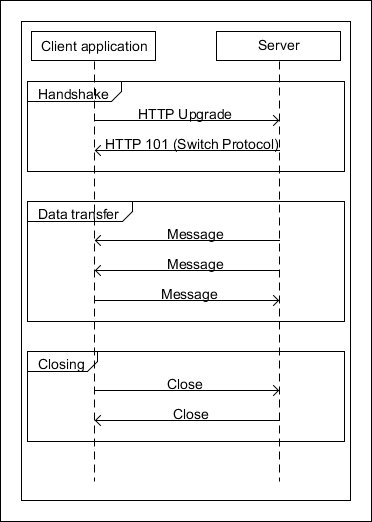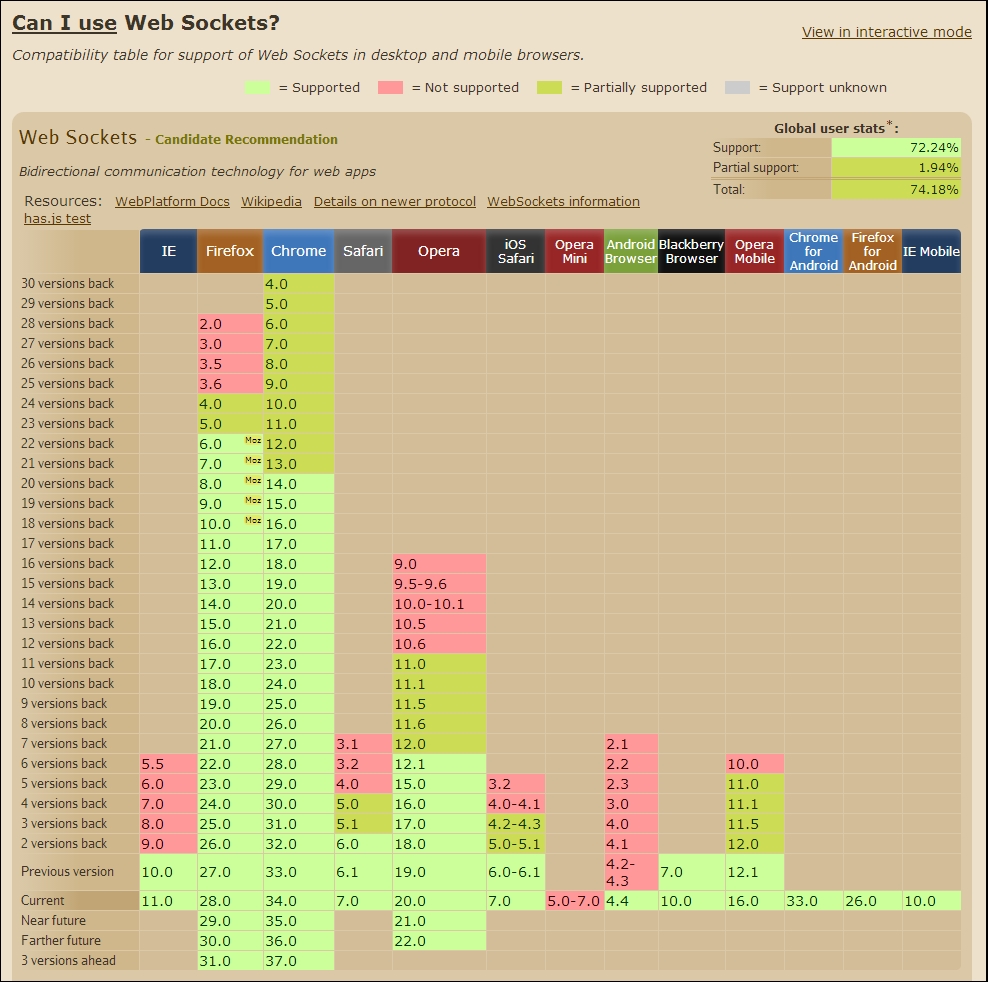To initiate a WebSocket session, the client must send an HTTP request with an Upgrade: websocket header field. This informs the server that the peer client has asked the server to switch to the WebSocket protocol.
Note
You may notice that the same happens in WildFly for Remote EJBs; the initial connection is made using an HTTP request, and is later switched to the remote protocol thanks to the Upgrade mechanism. The standard Upgrade header field can be used to handle any protocol, other than HTTP, which is accepted by both sides (the client and server). In WildFly, this allows you to reuse the HTTP port (80/8080) for other protocols and therefore minimise the number of required ports that should be configured.
If the server can "understand" the WebSocket protocol, the client and server then proceed with the handshaking phase. They negotiate the version of the protocol, exchange security keys, and if everything goes well, the peers can go to the data transfer phase. From now on, the communication is only done using the WebSocket protocol. It is not possible to exchange any HTTP frames using the current connection. The whole life cycle of a connection can be summarized in the following diagram:

A sample HTTP request from a JavaScript application to a WildFly server would look similar to this:
GET /ticket-agency-websockets/tickets HTTP/1.1 Upgrade: websocket Connection: Upgrade Host: localhost:8080 Origin: http://localhost:8080Pragma: no-cache Cache-Control: no-cache Sec-WebSocket-Key: TrjgyVjzLK4Lt5s8GzlFhA== Sec-WebSocket-Version: 13 Sec-WebSocket-Extensions: permessage-deflate; client_max_window_bits, x-webkit-deflate-frame User-Agent: Mozilla/5.0 (Windows NT 6.3; WOW64) AppleWebKit/537.36 (KHTML, like Gecko) Chrome/34.0.1847.116 Safari/537.36 Cookie: [45 bytes were stripped]
We can see that the client requests an upgrade connection with WebSocket as the target protocol on the URL /ticket-agency-websockets/tickets. It additionally passes information about the requested version and key.
If the server supports the request protocol and all the required data is passed by the client, then it would respond with the following frame:
HTTP/1.1 101 Switching Protocols X-Powered-By: Undertow 1 Server: Wildfly 8 Origin: http://localhost:8080 Upgrade: WebSocket Sec-WebSocket-Accept: ZEAab1TcSQCmv8RsLHg4RL/TpHw= Date: Sun, 13 Apr 2014 17:04:00 GMT Connection: Upgrade Sec-WebSocket-Location: ws://localhost:8080/ticket-agency-websockets/tickets Content-Length: 0
The status code of the response is 101 (switching protocols) and we can see that the server is now going to start using the WebSocket protocol. The TCP connection initially used for the HTTP request is now the base of the WebSocket session and can be used for transmissions. If the client tries to access a URL, which is only handled by another protocol, then the server can ask the client to do an upgrade request. The server uses the 426 (upgrade required) status code in such cases.
Note
The initial connection creation has some overhead (because of the HTTP frames that are exchanged between the peers), but after it is completed, new messages have only 2 bytes of additional headers. This means that when we have a large number of small messages, WebSocket will be an order of magnitude faster than REST protocols simply because there is less data to transmit!
If you are wondering about the browser support of WebSockets, you can look it up at http://caniuse.com/websockets. All new versions of major browsers currently support WebSockets; the total coverage is estimated (at the time of writing) at 74 percent. You can see this in the following screenshot:

After this theoretical introduction, we are ready to jump into action. We can now create our first WebSocket endpoint!
